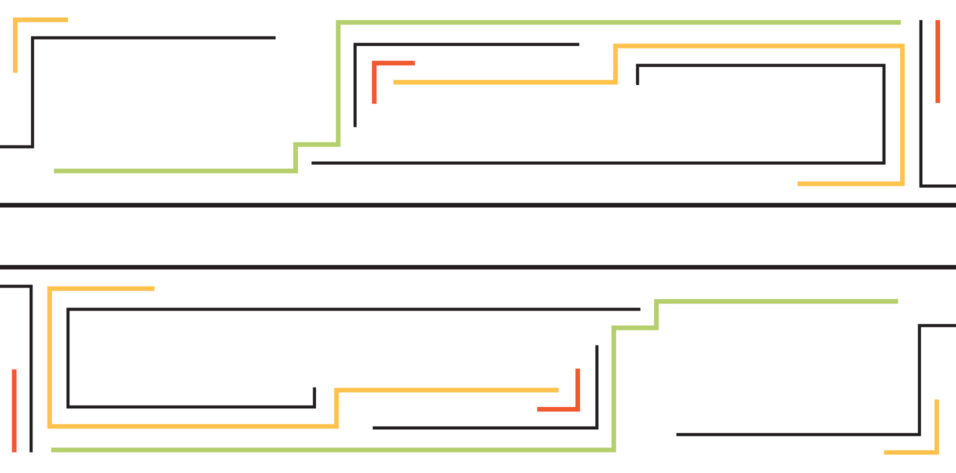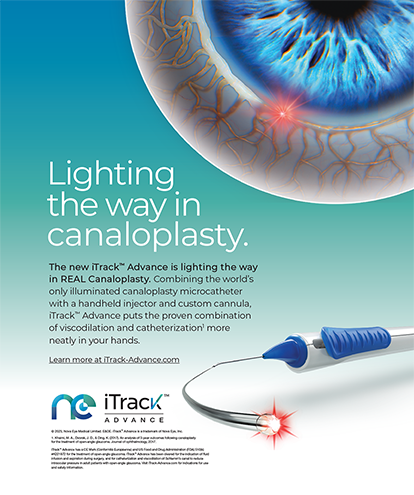
Every refractive cataract surgeon has been in the hot seat. A patient just paid you a small fortune to implant the lens of their dreams. The once optimistic person—who assured you they were easygoing—is severely disappointed after surgery. Maybe it is the nighttime glare or halos they don’t remember you warning them about or the loss of contrast for which preparing a patient is difficult. Upon examination, you may see a bit of capsular opacity and a few vitreous veils, but nothing looks out of place. You did your job perfectly, yet the result is met with frustration. The once reasonable patient has almost magically transformed into an optics engineer, begging for you to put the cataract back or “fix whatever you broke.”
Both of you feel tricked. It is up to you, however, to figure out how to resolve the patient’s problem. Don’t you wish you had an easy backup plan in place? Unfortunately, current options are limited.
PROBLEMS WITH IOL DESIGN
Current IOLs have three nuanced problems, explained here, that we accept because there is no viable alternative.
No. 1: IOL design does not match the anatomic lens. Dysphotopsias are a function of the radius of curvature of the IOL. The higher the index of refraction, the flatter the lens and the steeper the critical angle for reflection versus refraction. Many of the unsolvable problems of negative and positive dysphotopsias are functions of the thin IOL. In my opinion, a relatively flat, thin, foldable, nonexchangeable IOL platform is not a long-term answer for refractive cataract patients.
No. 2: IOL designs become obsolete. The IOL design cycle continues to evolve. There are almost no presbyopia-correcting IOLs on the market today that we were implanting 5 years ago. It doesn’t mean the old technology doesn’t work but that the latest lens technology is better. Breakthroughs are bound to happen. What we do for our patients today will be obsolete in 5 to 10 years. We don’t know what we will be doing for them at that time owing to the unknown unknowns, but it will involve an improvement on what we offer today. In my opinion, lenses designed with exchangeability in mind will help patients enjoy better vision as new technology is developed.
No. 3: IOL designs contribute to capsular collapse syndrome. The core problem with current IOL designs is that they contribute to something I call capsular collapse syndrome. All cataract surgery patients who receive an IOL approved by the FDA experience this in some form or fashion. The following are the three main signs of capsular collapse syndrome:
Accommodation is lost. The human lens capsule is the thickest basement membrane in the human body. If accommodation is the result of ciliary muscle contraction and loosening of zonular tension on the lens capsule, then a counterbalancing force within the lens complex must be present to create the change in power. I believe the elasticity of the intact lens capsule is the necessary counterbalancing force. By performing a traditional capsulotomy and allowing the lens capsule to collapse, the counterbalancing mechanism is altered dramatically.
Loss of capsular volume causes variability in effective lens position and increases vitreous cavity volume. Once the cataract is removed and the capsule collapses, the variable of effective lens position is the first potentially complicating factor. The exact position of the lens cannot be predicted precisely in every patient due to the volumetric change between the cataract and the IOL. This volume loss causes the vitreous cavity to expand, potentially leading to posterior vitreous detachment and retinal tears and detachment.
Capsular fibrosis, including anterior capsular opacification, posterior capsular opacification, and phimosis, occurs. Once the capsule collapses, the clear elastic tissue begins to fibrose through the process of epithelial-mesenchymal transition. The fibrosis locks the haptics in place, which helps prevent IOL rotation but can make IOL exchange after about 6 months more difficult. The fibrosis causes posterior capsular opacification (PCO) along with the more nefarious phimosis and late in-the-bag IOL dislocation. Most anterior segment surgeons do not want to exchange a lens after an Nd:YAG posterior capsulotomy.
The collapse of the capsule has long been ignored as a potential problem or opportunity for improvement. In my opinion, this is a central issue that will define the future of exchangeable lens design.
THE SOLUTION
About 12 years ago, I invented the Gemini Capsule (Omega Ophthalmics; Figure), a 3D capsular support ring, with the intent of preventing capsular collapse syndrome by keeping the natural capsular bag open. An obvious benefit of the device will be preventing capsular fibrosis, which should ultimately reduce PCO rates and the need for Nd:YAG capsulotomies. Because haptic fibrosis is prevented and the capsular bag will likely be intact, lens exchange can become a routine procedure even years after surgery.

Figure. The Gemini capsular support ring is designed to keep the natural capsular bag open.
The normalization of IOL exchange allows surgeons to have dramatically different conversations with patients both before and after surgery. Patients currently have decision anxiety around lens choice. They worry about selecting the wrong IOL and deciding on a technology before experiencing the results. When lens exchangeability is an easy option, patients will have the flexibility to change their minds later if they aren’t happy with their results, a better technology is available, or the health of their eye changes as they develop conditions such as glaucoma or age-related macular degeneration.
The Gemini Capsule keeps the natural capsular bag space open and reserves the real estate for future technology, such as devices designed to monitor or treat ocular disease through electronics or controlled-release drug implants.
CONCLUSION
I believe that a capsular support structure will change the way we treat patients from both refractive and medical standpoints. Imagine if an IOL were no longer considered a permanent decision. What if the IOP of a patient could be remotely monitored through a wireless implant or a controlled-release drug implant used to treat glaucoma for 5 to 10 years or beyond? The mission of Omega Ophthalmics is to prevent capsular collapse syndrome to protect and enhance human vision. The future of IOL exchange and refractive cataract surgery will forever be changed if we succeed.
*Bookmarked is a sister publication to CRST




